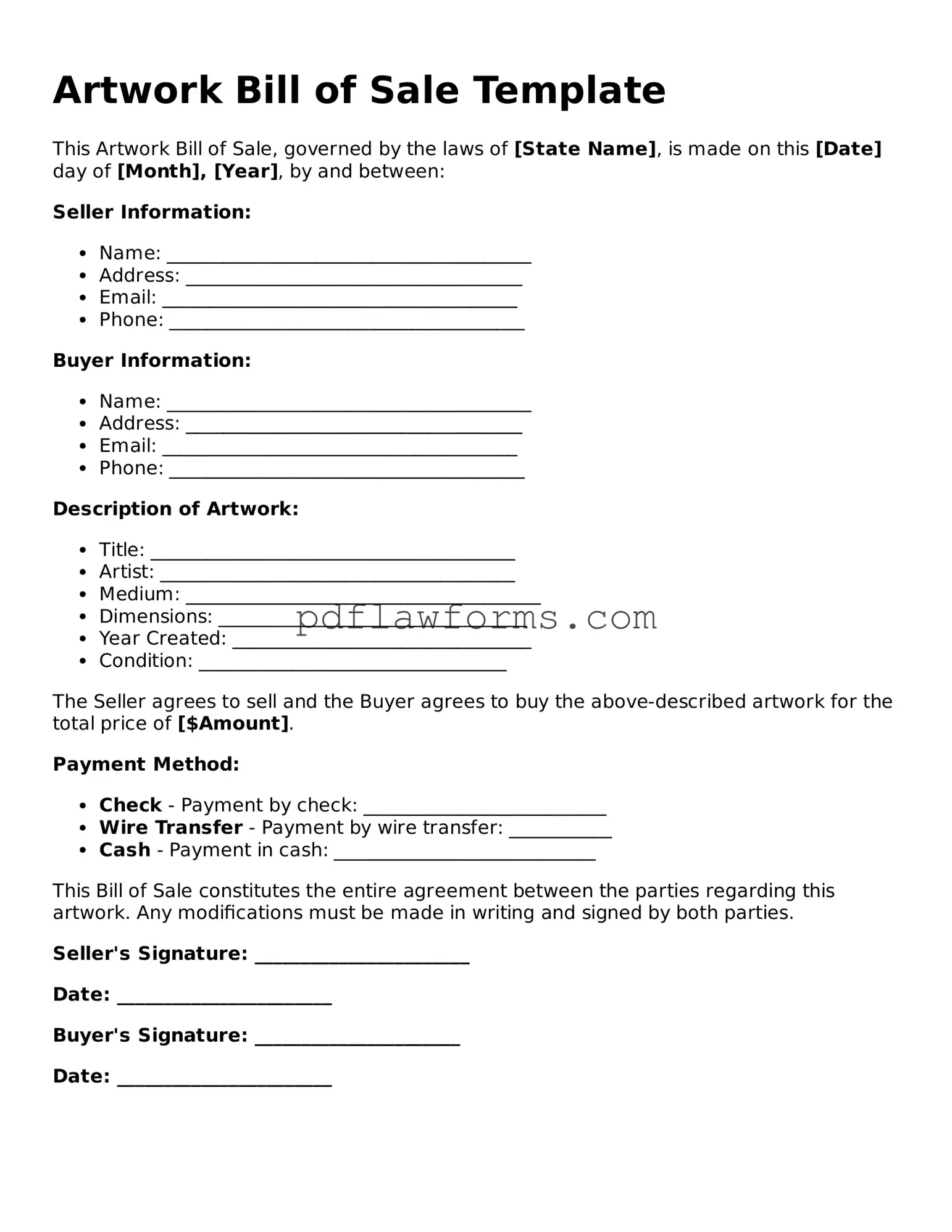Official Artwork Bill of Sale Form
The Artwork Bill of Sale form is a legal document that records the transfer of ownership of a piece of art from one party to another. This form ensures that both the seller and buyer have a clear understanding of the transaction, including details about the artwork and the terms of sale. If you're ready to make a purchase or sell your artwork, fill out the form by clicking the button below.
Make My Document Online
